Orthopedics
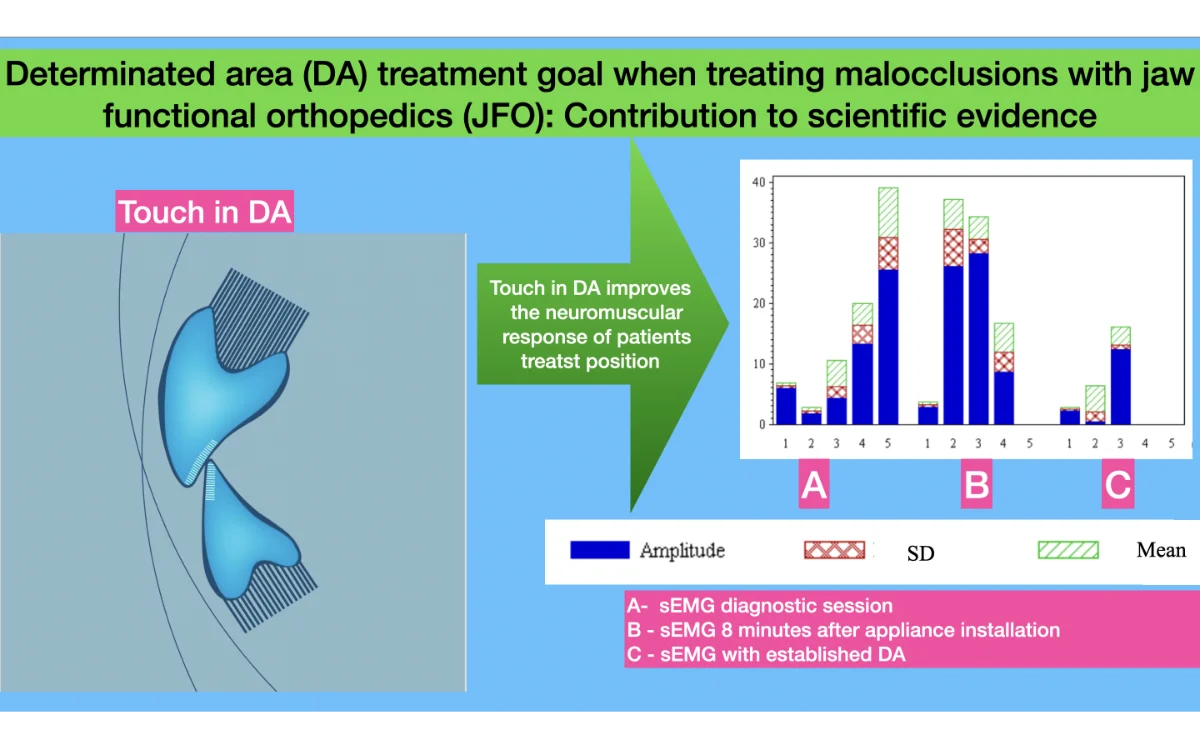
Editor's pick
Research Article
Determinated area (DA) treatment goal when treating malocclusions with jaw functional orthopedics (JFO): Contribution to scientific evidence
By Eduardo Sakai, Luciano Wagner Ribeiro, Orlando Santiago Jr, Sergio Polizio Terçarolli, Jordanna Guedes Amorim
One of the goals of malocclusion treatment with Jaw Functional Orthopedics (JFO) is to obtain touch of the inferior incisors against the superior incisors in Determinate Area (DA). It is postulated that this touch would bring better stimuli and consequently faster results. Surface electromyographic study of the muscles was performed in Masseter, Temporal and suprahyoid muscles bilaterally from 159 patients undergoing malocclusion treatment with functional orthopedic appliances (FOA). To record muscle electric activity were used a conditioning signal module from Lynx Electronics Ltda with 8 channels, model EMG1000; software AqDAnalysis 4,18 from Lynx Electronics Ltda.; Software Lynx BioInspector 1,8r; passive surface electrodes (Ag/AgCl) from Noraxon Dual Electrodes (USA); dischargeable reference electrodes Kendall Meditrace (Ag/AgCl) – Canada. Frequency calibration was 2000 Hz, with 2048 sample by channel and time 1,024 seconds, and filters regulation was 20 Hz and 1000 Hz. The results found prove that there is a better electromyographic activity (bilaterally balanced) of the studied muscles when there is touch on DA. Conclusion. Touch in DA improves the neuromuscular response of patients treated with JFO. sEMG is a trustable tool to analyze masticatory muscles function for Diagnosis, Treatment and evaluation post treatment/gained objective.
May 23, 2024
Orthopedics
Most cited
Research Article
Effects of mechanical vibration on bone – a critical review
By Orlando Santiago Júnior, Rudolf Huebner, Maria Lucia Duarte
November 28, 2022
Orthopedics
Most cited
Research Article
Treatment of temporomandibular dysfunction with jaw functional orthopedics: a retrospective study
By Orlando Santiago Júnior, Marcus Vinicius Lucas Ferreira, Rudolf Huebner
June 21, 2021
Orthopedics
Most cited
Research Article
Functional orthopedic appliance for vertical dimension increase and mandibular deprogramming ORLANDO SANTIAGO SYSTEM 1 – OSS1. Indications and laboratorial manufacturing
By Orlando Santiago Júnior, Mario Vedovello Filho, Marcus Vinicius Lucas Ferreira, Rudolf Huebner
June 22, 2021
Orthopedics
Most cited
Research Article
Does Planas’ Equiplan really work in deep bite treatment?
By Orlando Santiago Júnior
December 29, 2021
Orthopedics
Jaw Functional Orthopedics and Craniofacial Growth
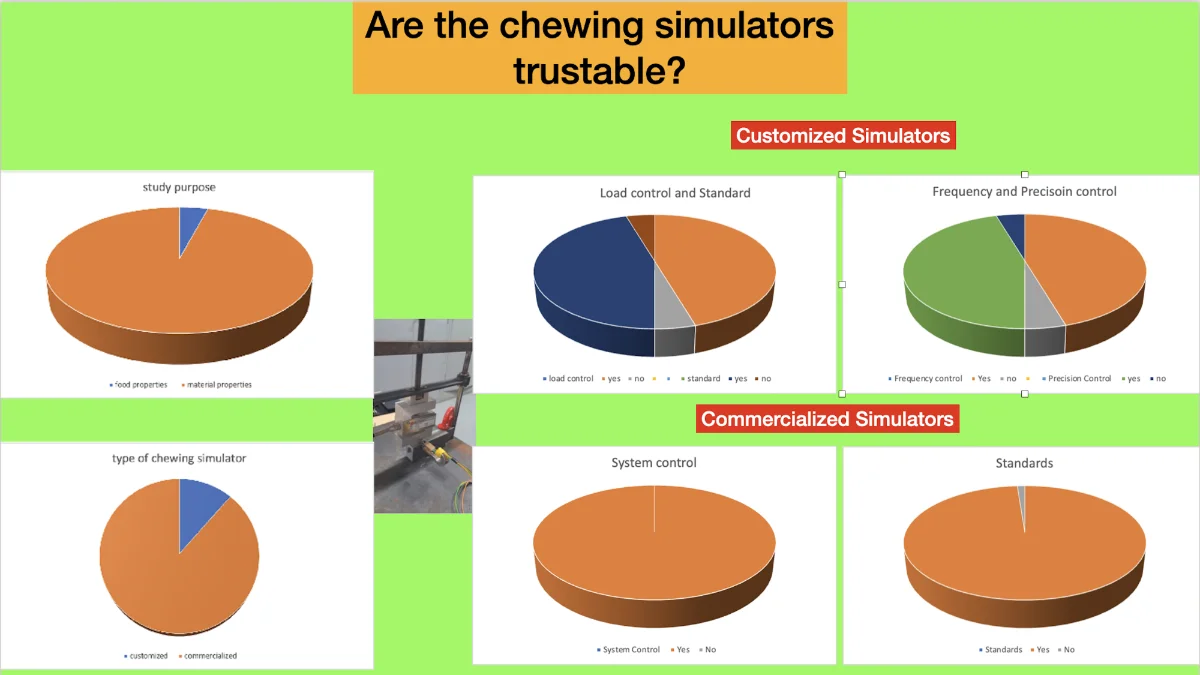
Research Article
Do chewing simulators influence the test results of dental materials? Systematic review
Investigate whether different results about the physical properties of the same biomaterial frequently found in the literature are due to chewing simulator deficiency. A literature review was performed by searching for data on indicators of test accuracy, reproducibility, maintenance of test parameters during all experiments, and standards in the articles or in the sites of manufacturers. The database searched was CAPES PORTAL, and the keywords used were “bite force” AND “simulator”, “chewing simulator” and “mastication simulator”. Including criteria for the papers are publication filter date of “January 1, 2016”, articles in English, Spanish and Portuguese language were accepted. The first 100 papers that seemed suitable when considering the title and abstract were recovered. Only one simulator used for food property studies had the parameters searched. In the customized simulators for biomaterial properties, only one showed standards, and 8 showed all other parameters searched. All manufactured simulators showed all parameters searched, and only two manufactures did not show standards. Based on the data obtained, the disparate results of experiments with dental materials appeared to be more related to the test conditions than to the testing machines. Knowledge Transfer Statement The findings of the current review suggest that the chewing simulators used in preclinical research are reliable, bringing safety to restorative processes regarding the material. Any difference in preclinical investigations about dental material physical properties is due to test conditions other than chewing simulators.
June 25, 2023
Orthopedics
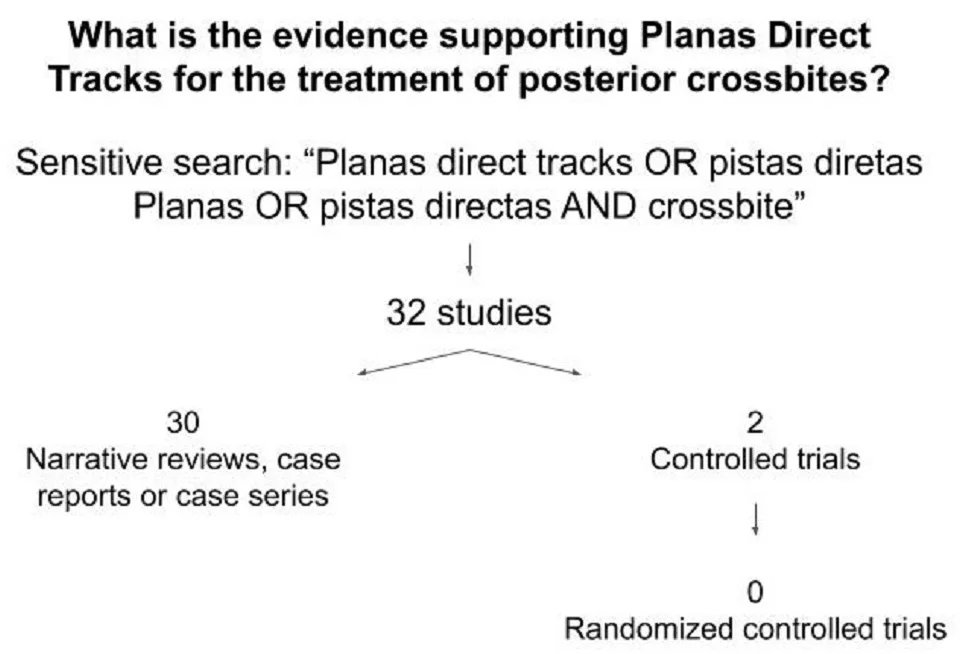
Research Article
Planas direct tracks to treat functional crossbites in children: scientific evidence
Introduction: Posterior functional crossbite is a common malocclusion in children, with a prevalence between 7.5-24 %. It has an important impact on facial functions, and may cause asymmetries in craniofacial development. Different interventions have been used to correct this malocclusion but there is a lack of studies with methodological rigor that support these interventions. Planas Direct Tracks (PDT) constitute one of such interventions. They seek to reestablish the functional occlusal balance of children through selective grinding, complementing this adjustment with composites. Objective: To present the level of scientific evidence available on PDT to correct posterior crossbites. Method: A sensitive search was carried out in the main databases: Pubmed, BVS Odontology, Cochrane, SciElo and Google academic. The articles were selected, duplications removed and critical evaluation of the literature performed classifying the studies according to the evidence pyramid. The aim is to point out ways to improve the quality of the studies. Results: 32 studies were included. 30 studies were narrative reviews, case reports or case series and two were controlled trials. All studies had important biases. No randomized controlled trial was found. Conclusion: So far, there are no studies, sufficiently rigorous methodology, on Planas direct tracks to correct functional crossbites.
November 1, 2022
Orthopedics
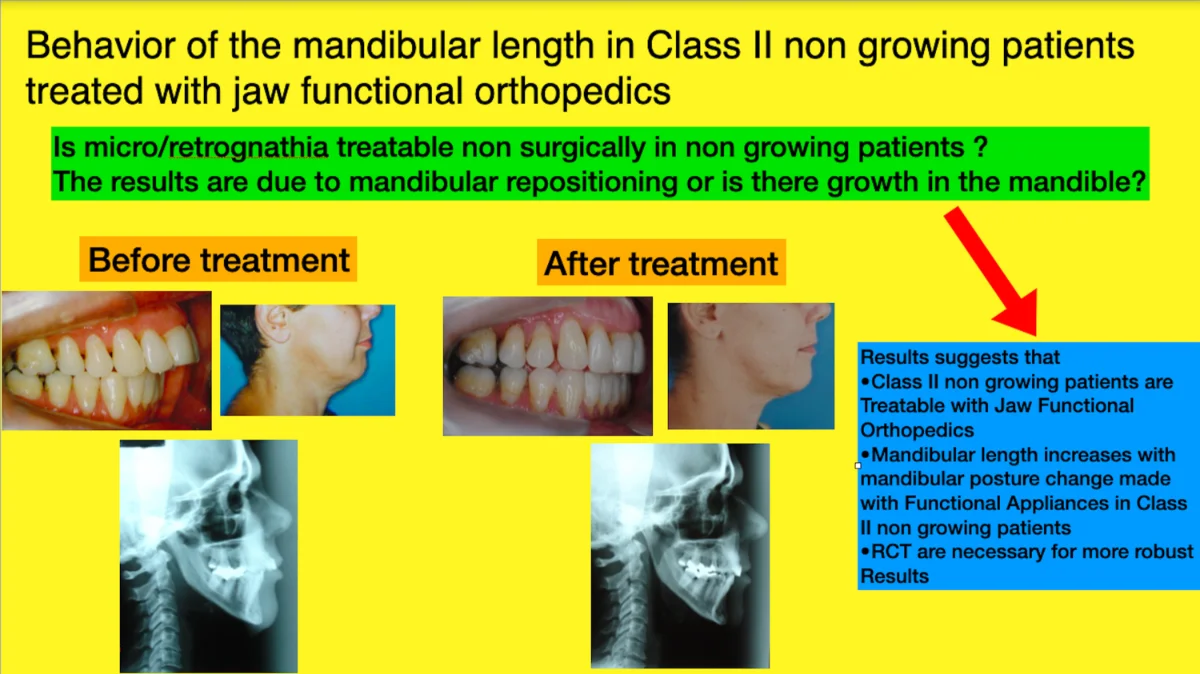
Research Article
Behavior of the mandibular length in class II non-growing patients treated with jaw functional orthopedics
Class II treatment is the leader of seeking for dentofacial correction in offices all around the world due, mainly, to facial esthetics impairment caused by this malocclusion. Mandibular forward repositioned is needed for the majority of this treatment. Jaw Functional Orthopedics (JFO) is a recognized protocol to treat Class II in growing patients. The aim of this investigation is to study the behavior of mandibular length in class II non-growing patients treated with JFO. Distance between Gonion and Mento were measured in lateral teleradiographs at T0 and T1 (from 18 to 21 months of treatment) of non-growing class II patients under treatment with JFO and mandibular supplementary growth was found (P = 0,006). In the sample studied jaw functional orthopedics showed to be efficient to correct the overjet in class II non-growing patients. Mandibular advancement with functional orthopedic appliances promotes a supplementary mandibular growth in non-growing patients. Further studies are necessary for a better comprehension of the subject.
December 27, 2022
Orthopedics
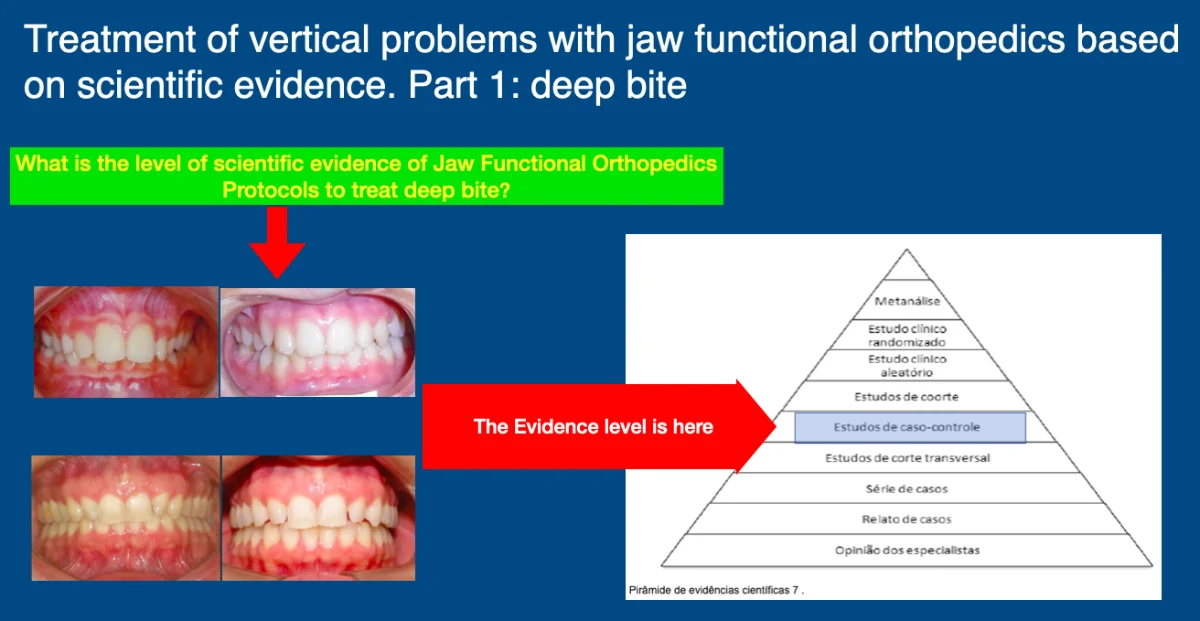
Research Article
Treatment of vertical problems with jaw functional orthopedics based on scientific evidence. Part 2: deep bite
The vertical problems of the stomatognathic system that alter the overbite, either by increasing in the deep bite (DB) or decreasing in the anterior open bite (AOB), are among the great challenges of the dentofacial corrections in the treatment and the retention and stability protocols. In this paper the state of art of DB treatment with Jaw Functional Orthopedics (JFO) will be discussed. JFO has a unique diagnostic tool for changes in vertical growth of the face, the Articular Compass, developed by Simões. Individuals with hypodivergence and DB are, usually, difficult to treat and more difficult to stabilize the obtained results. Since 1950-decade Planas advocate that the Equiplan – a metal accessory used in functional orthopedic appliances (FOA) is efficient in deep bite treatment by levelling the occlusal plane. Promising results are found with a P = 0,00, but in aweak evidence study design based on the scientific evidence pyramid. Much of the discussion of incisor intrusion or molar extrusion to treat DB seems to be solved with the use of Equiplan, but it still has no scientific evidence, only clinical evidence. In conclusion Randomized Clinical Trials are needed to investigate the efficiency and Modus Operandi of JFO to treat DB.
November 1, 2022
Orthopedics
Jaw Functional Orthopedics and Craniofacial Growth
<p>Original scientific articles presenting information that is new and relevant to jaw functional orthopedics</p>
APC
Free of charge
Best of Theme
Most cited
Research article
June 30, 2022
Occlusal plane parallel to camper plane: reality or fallacy? A tomographic study on human Sambaqui skeletal remains
By Patrícia Valério, Maria Rita Xavier, Sergio Terçaroli, Almiro Machado, Marcos Gribel
Most cited
Research article
September 25, 2024
Advances of 3D printing in oral oncology: personalized technologies for patients – a narrative review
By Mirian Castro-Braga, Wellingtânia Domingos Dias, Raquel Fabiane Nogueira, Lucas Guimarães Abreu, Rudolf Huebner, Junia Maria Serra-Negra
Most cited
Research article
November 1, 2022
Functional orthopedic device type Sn20 – a therapeutic resource in the control of chronic temporomandibular dysfunction – case report
By C. A. O. Machado, P.-C. Simamoto Junior
Most cited
Research article
September 8, 2024
Exploring additive manufacturing in assistive technologies to transform the educational experience: empowering inclusion
By Wellingtânia Domingos Dias, Jefferson Henrique Soares, Lara Corrêa Guimarães, Natalia Espinosa Martínez, Taciana Ramos Luz, Yaçana Maria da Costa Soares Sousa Lima, Rudolf Huebner
You might also like
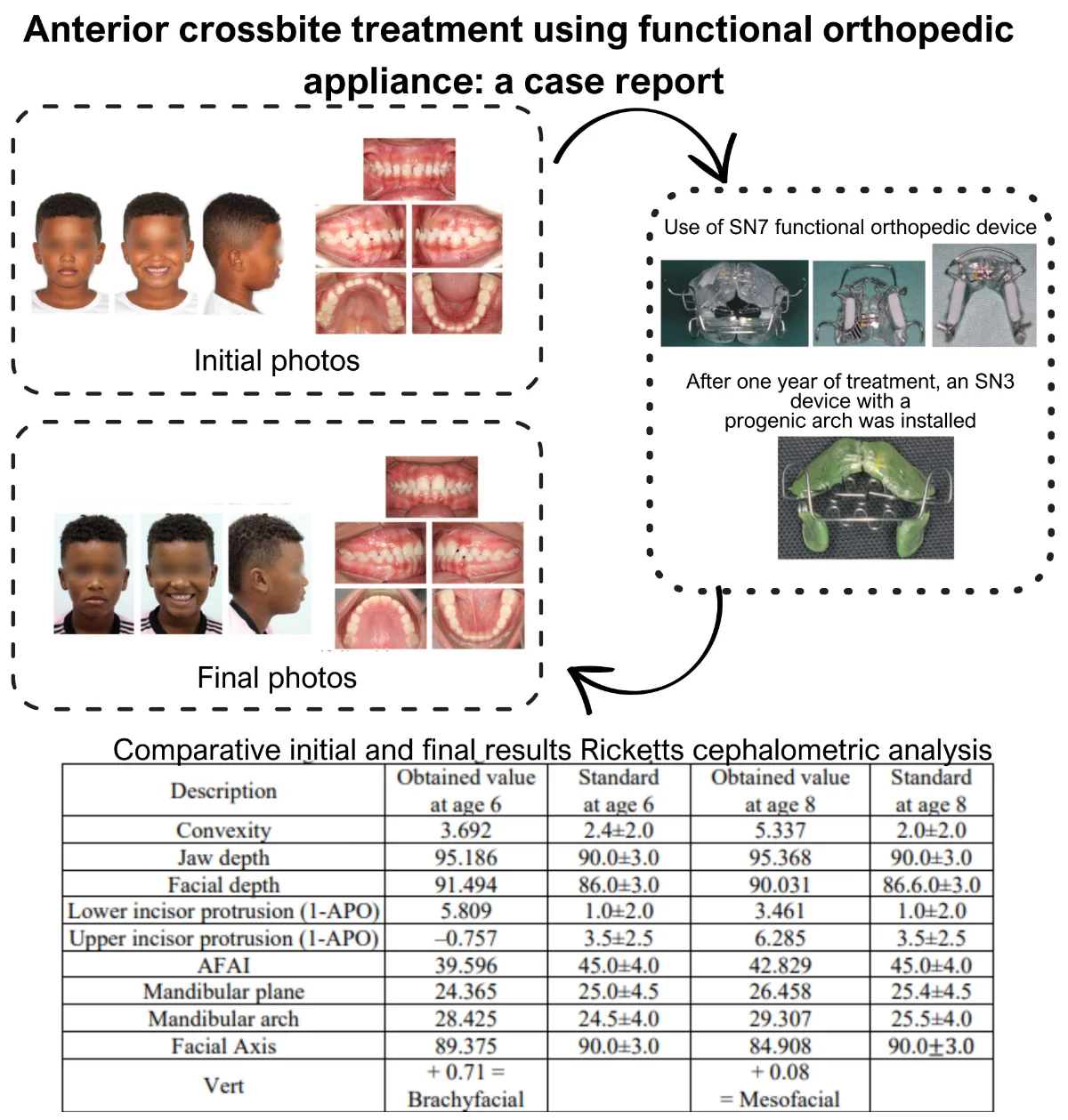
Most downloaded
Research Article
Anterior crossbite treatment using functional orthopedic appliance: a case report
By Vilmara Geralda Francisco De Assis, Saulo Gribel, Anderson Mamede
Anterior crossbite can affect primary, mixed, and permanent dentitions. Early treatment is recommended, as it can impact facial, aesthetic, functional, and developmental aspects. The etiology of anterior crossbite is multifactorial, including dental, skeletal, and postural origins. Treatment should be defined based on age and etiology, with various therapeutic resources available for correction. In primary dentition, direct flat tracks, different types of functional orthopedic appliances, quad-helix, and facial mask can be used. In mixed dentition, fixed segmented or continuous orthodontics, elastics, and other devices can be added to the treatment. In permanent dentition, orthognathic surgery may be indicated for adults, especially in cases of anterior crossbite associated with skeletal Class III that cannot be compensated dentally. This case report describes the treatment of early mixed dentition anterior crossbite with a functional orthopedic appliance at the Orthodontic Specialization, Postgraduate Course at Modal college, Belo Horizonte, Minas Gerais, Brazil. After correction, proper chewing functions were reestablished with ideal developmental stimuli.
June 28, 2023
Orthopedics
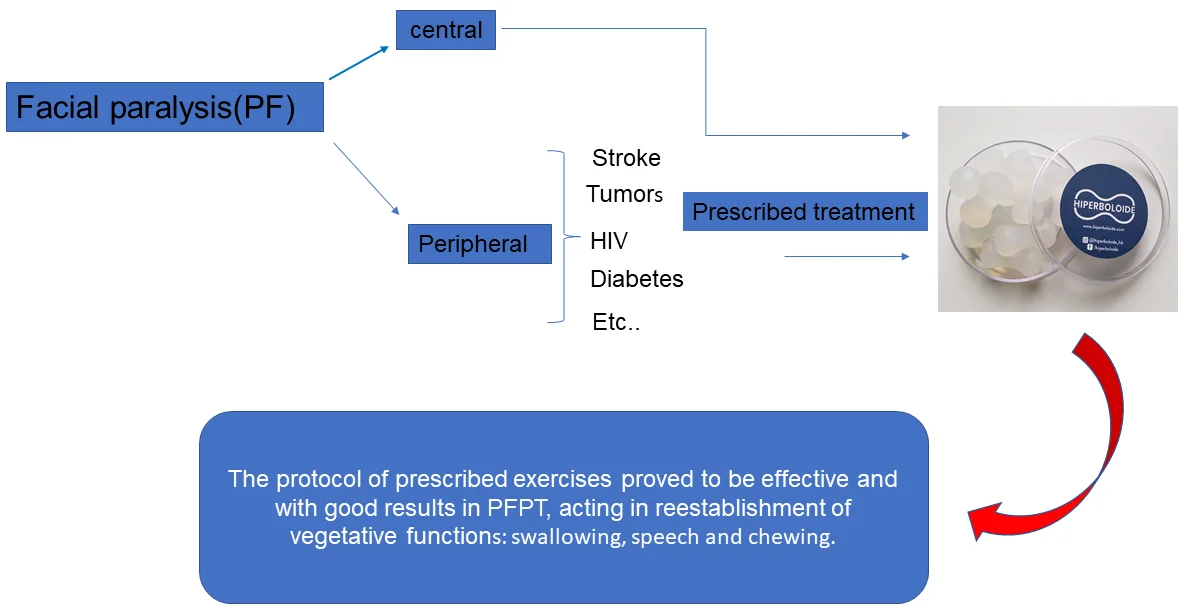
Most downloaded
Research Article
Treatment of traumatic facial paralysis with mechanical stimulus – hyperboloid: case report
By Fabiana Augusto Novo Borghi, Rosana Queiroz, José Ricardo Gurgel Testa
Paralysis is the complete abolition of movement in a given territory of the body. Traumatic peripheral facial paralysis (PFPT) is characterized by lack of movement, due to injuries to the seventh cranial nerve (Facial Nerve), as a result of surgical resection of tumors in the region, firearm trauma, falls etc., can be uni or bilateral. Individuals affected by this paralysis when unilateral, tend to present facial asymmetry between the hemi faces, both at rest and in movement, as well as functional limitations to perform activities such as drinking, eating, speaking and problems in ocular hydration (dryness or watery eyes). In the case report, the patient underwent several types of treatment with very limited results. After 30 days of therapy with the hyperboloid, the patient reported improvements in clinical and motor conditions.
September 13, 2021
Orthopedics
Simões Network 2 (SN2): A special model for special needing
Functional Orthopedics appliances must follow strict rules of construction and respect the correct indications, to achieve the proposed goals. The approach must be individualized for each patient according to each needing. Dr Wilma Alexandre Simões created a network of appliances, with no similarity with other appliances created by other authors. Her appliances respect rigid scientific fundamentals and provide for the clinician special tools for solving different types of occlusopathies. Here we present some rules, developed, and scientifically supported by the authors, in order to optimize the use of one of Simões Network called SN2.
Clinical application of digitalization of occlusal contacts with dental scanner
This study aimed to evaluate the number, intensity and position of occlusal contact points in a case of mesiocclusion, hyperdivergence, with open bite. An occlusal record was taken from a patient with anterior and lateral open bite mesiocclusion, using the Planmeca Esmerald S intraoral scanner in maximum intercuspation. The intensity of the occlusal contact was analyzed with the software 3shape Ortho Analyzer Orthodontics, using the Occlusion Map module, through the 3D Color Map tool, with a 0.5 mm virtual articular paper. These results were compared to the occlusal support points defined by Planas [10]. The interpretation of the data obtained was made by assessing the interocclusal intensity of the contact points, number of contacts and position during three different moments (1S, 2S, 3S) in the record taking process. The chromatic scale of the Color Map is: red, orange, yellow, green and blue. To identify the occlusal contact points in digital, they are shown in red points when full contact occurs, while minimum contact is shown in blue. We evaluated the number of teeth with interocclusal contacts. It was determined that having the appropriate number of contacts does not imply that they are in the correct position. In addition, the method suggests reliability in the filing and record keeping of occlusal contacts. By identifying intensity, number and position of the occlusal support point we can objectively record interocclusal alterations.